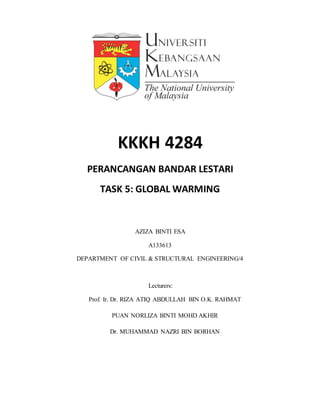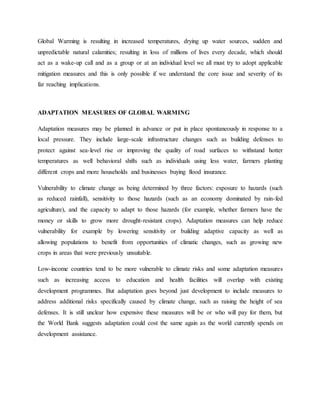The document discusses global warming and its causes, effects, and potential mitigation measures. It notes that global warming is primarily caused by human greenhouse gas emissions, especially carbon dioxide from fossil fuel combustion. Effects of rising temperatures include melting ice sheets and glaciers, sea level rise, stronger storms, and shifting animal and plant ranges. Proposed mitigation approaches center on reducing greenhouse gas emissions by transitioning to cleaner energy sources and more efficient transportation and industry. Adaptation strategies are also needed to address impacts that can no longer be avoided.








